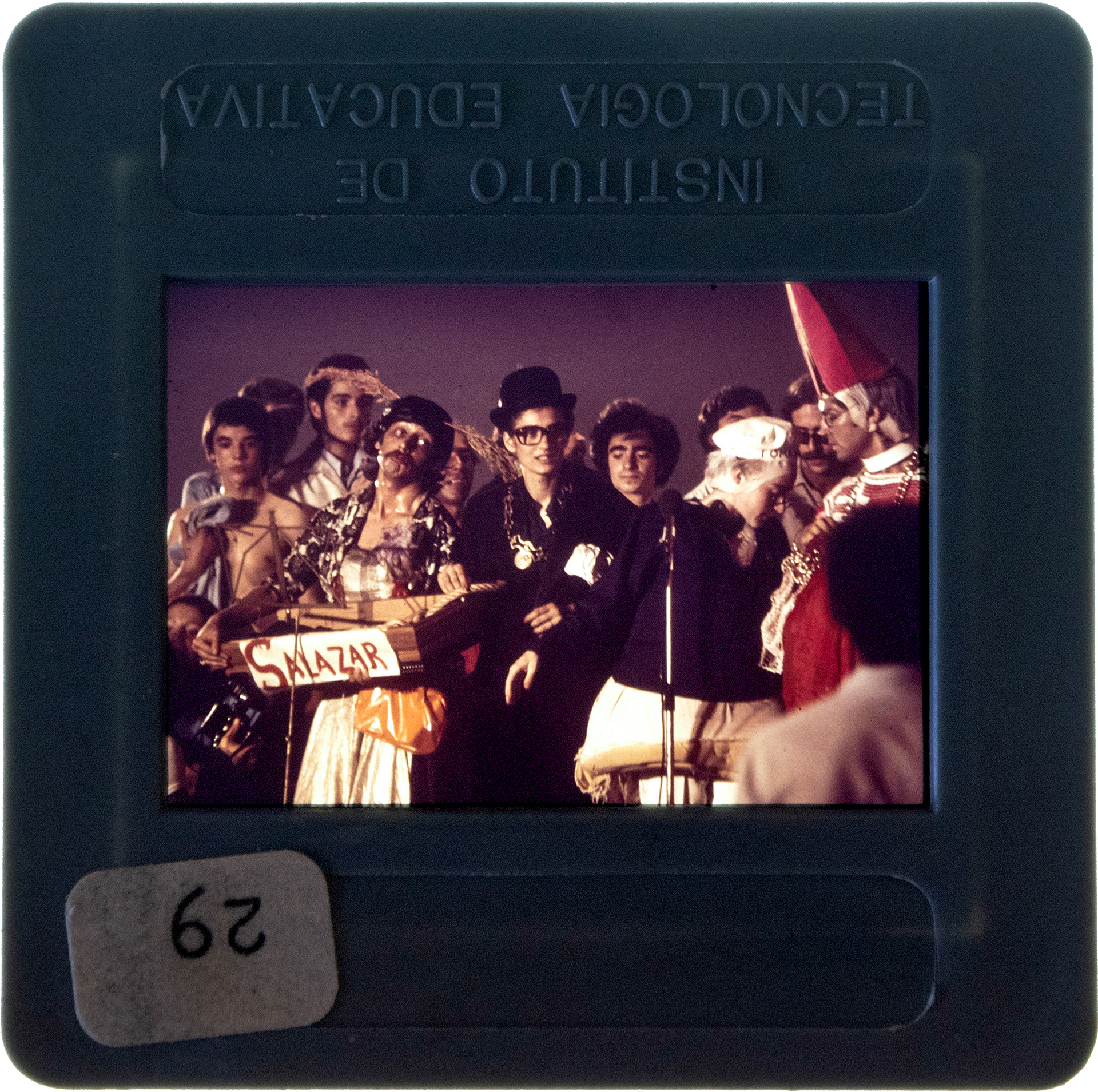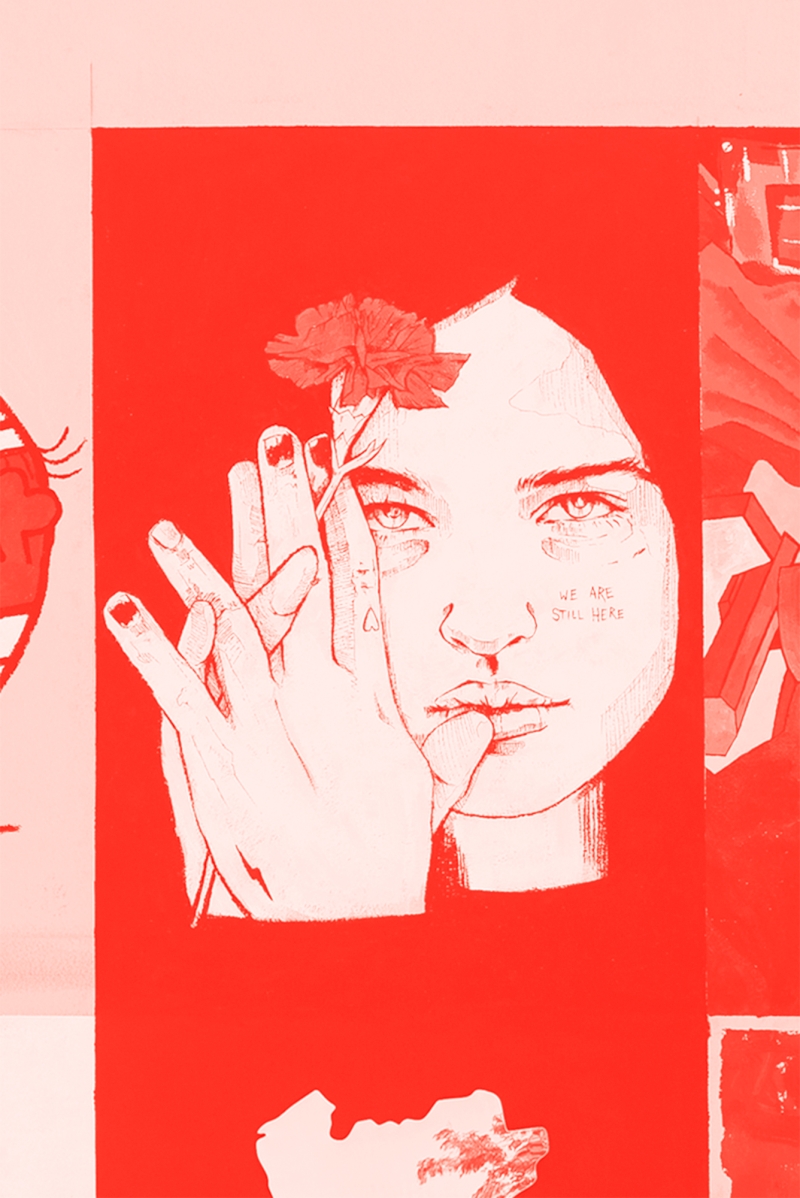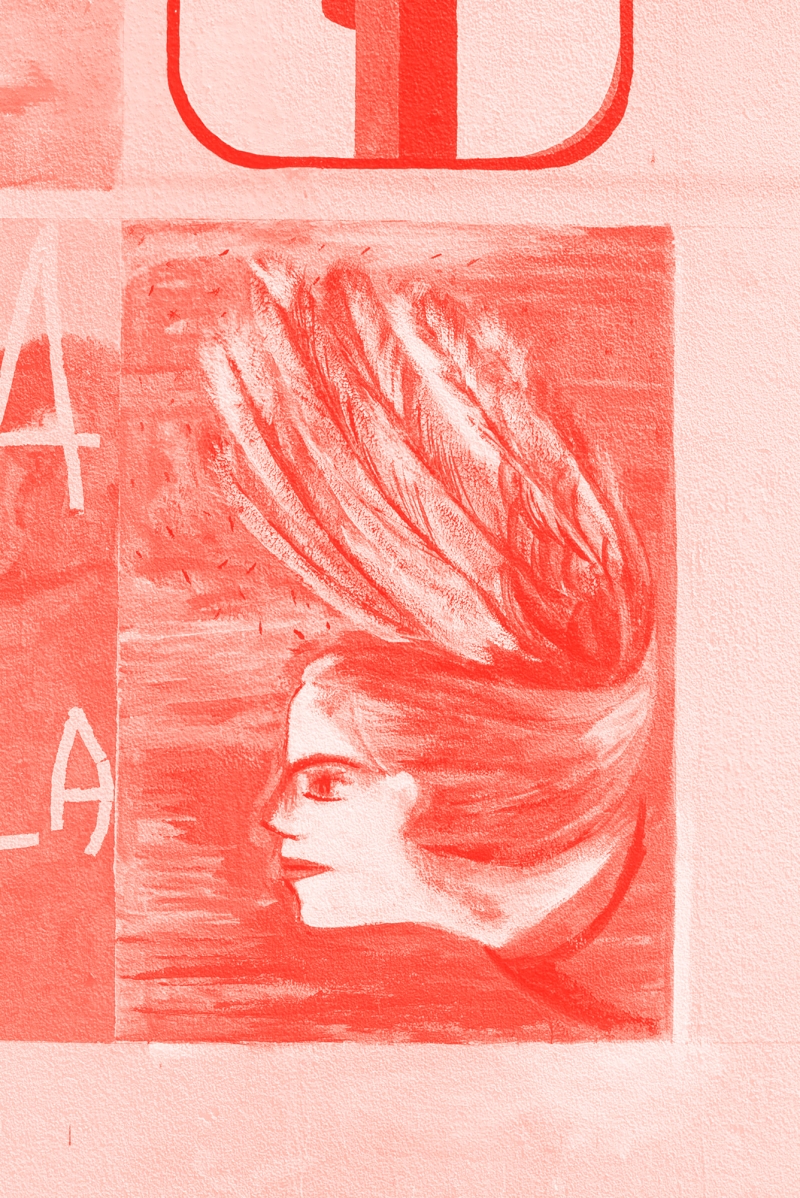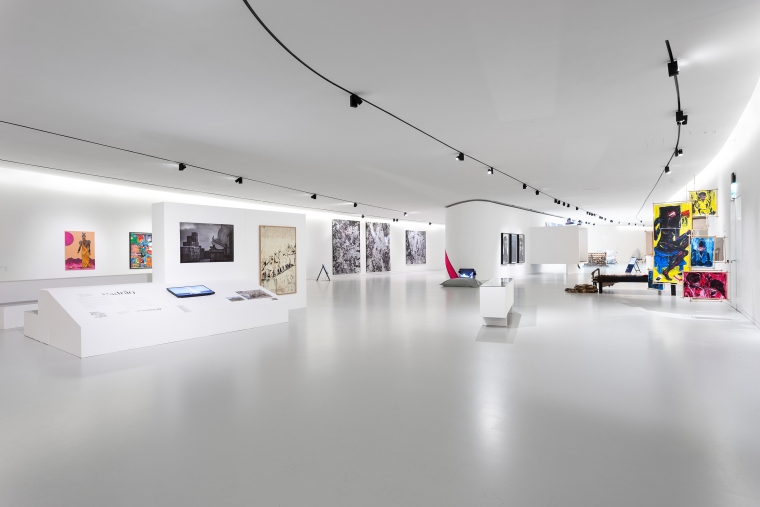Freedom, Art, Revolution: The Mural of 10 June 1974
Filipa Lowndes Vicente
Originally written for the Portuguese journal Público and published in its supplement Ípsilon on 10 June 2022.
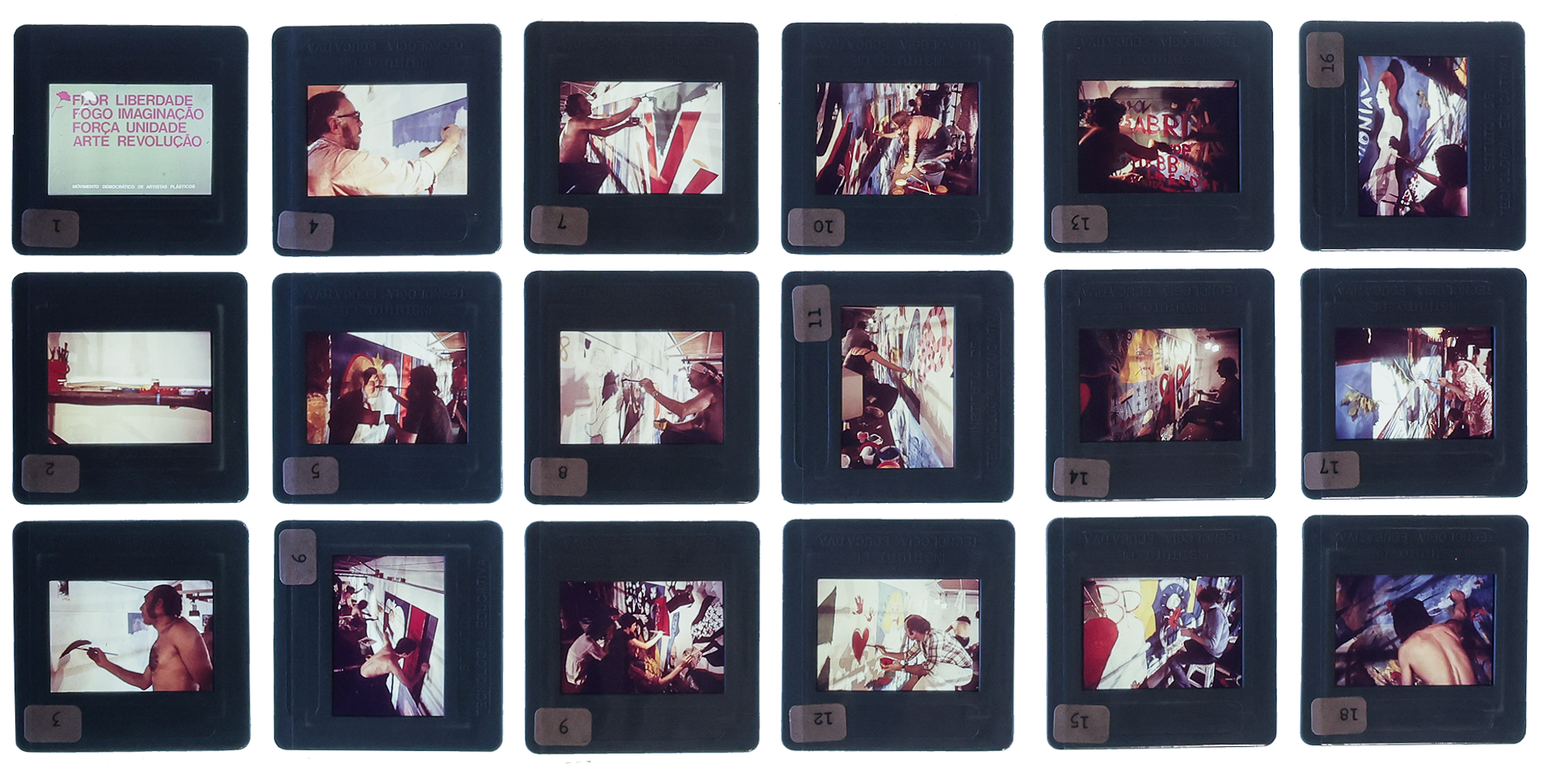
The album and the slides bought at the Feira da Ladra flea market in Lisbon by Filipa Lowndes Vicente. Views of the painting of the mural and the album's cover. Photos: Daniel Rocha.
I saw it on the floor at the Feira da Ladra flea market one Saturday morning. I picked up the small book of slides and read what was written on the cover: “flower freedom fire imagination strength unity art revolution”. In small letters at the bottom, more words: "Movimento Democrático de Artistas Plásticos" (Democratic Movement of Visual Artists), “25 April – Day of National Liberation”, followed by “Day of solidarity with the Armed Forces Movement” (Movimento das Forças Armadas). I opened it. On the inside cover, more information – “Collective Painting by 48 artists (no. symb[olic] of 48 years of fascism)”. Lower down, the names of the 48 artists in alphabetical order. On the right, formatted as a list, the captions for the 30 numbered slides showing photographs of the event. At the bottom, finally, the place where it had all happened: “Modern Art Gallery/Primavera Market/Belém/Lisbon. 10 June 1974”. On the back, and written on each of the slides, is the name of the organisation that produced the object – the Institute for Educational Technology (Instituto de Tecnologia Educativa). The gallery and mural burnt down in 1981 – the “fire” of the title, ironically, destroyed the “art” of the “revolution” – and only visual and filmic representations of the place remain. This catalogue of slides is just one of those records. There are also the memories of those who were present on that day: the artists and the people that went to see the making of the mural and celebrate that first democratic 10 June – the National Day of Portugal – in 1974. It is easier to find the artists than the “people”, the thousands who passed by on that festive day. Many have already died. Fire and death have effaced a lot of what could have been written about that day on which there was so much to celebrate.
Many of the names of the 48 artists were familiar to me, but I had never heard of this mural, nor of the Democratic Artists’ Movement, nor indeed of the gallery in Belém. I took this document home thinking that I would like to know more and write about it. But the subject did not fit in with my ongoing research projects and how could I justify distracting myself with side ventures when more pressing work was there waiting to be finished? However, when a few years later, in 2022, I read in an interview that João Pinharanda, the director of maat – Museum of Art, Architecture and Technology, was going to organise at that museum a “reinterpretation” of the 1974 mural, with 48 artists – in remembrance of the 48 years of fascism, but also to commemorate 48 years of democracy – I finally had a good reason to go back to that slide catalogue and its history.
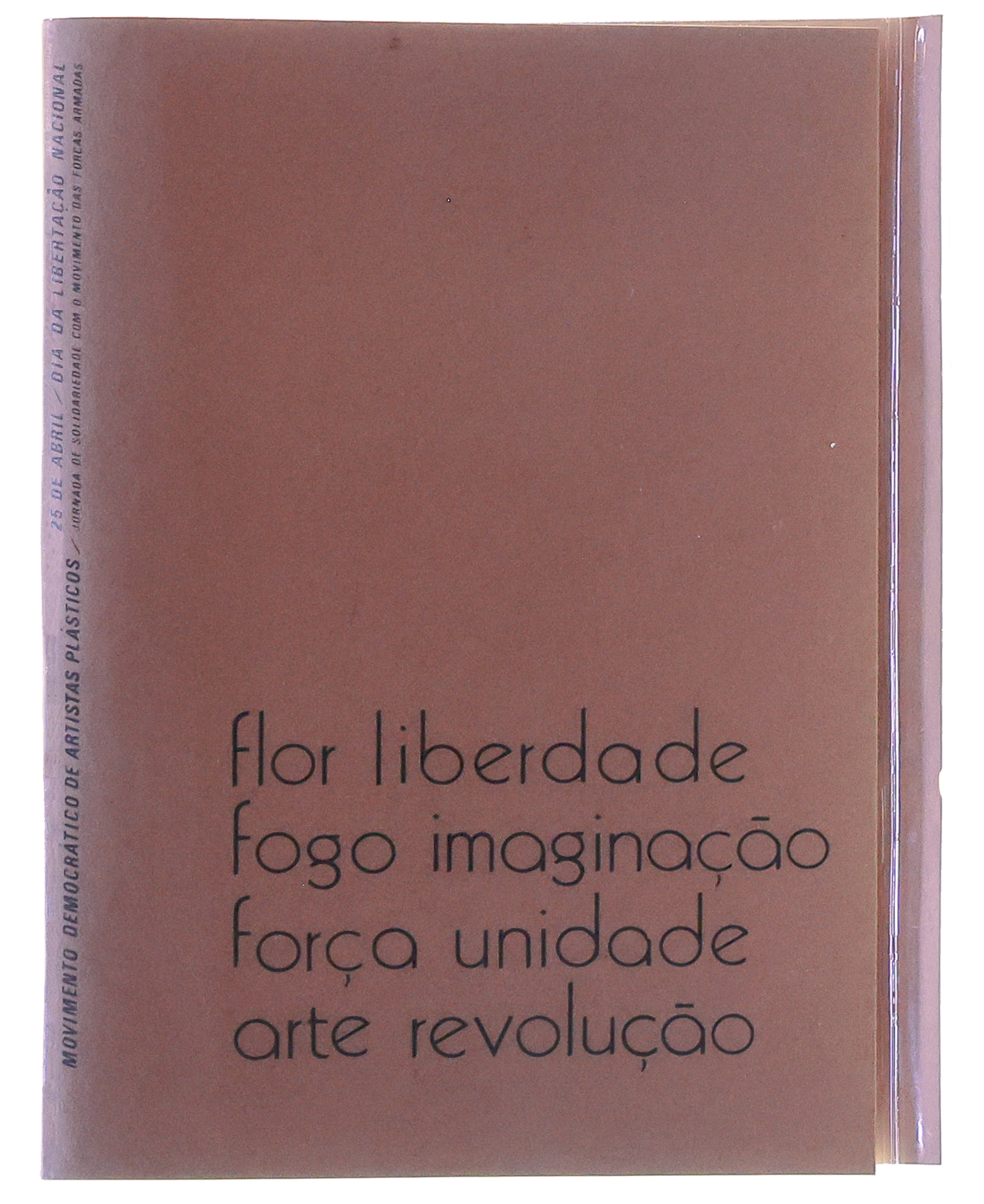
Movement was the word of the moment in 1974. As was democracy.
 |
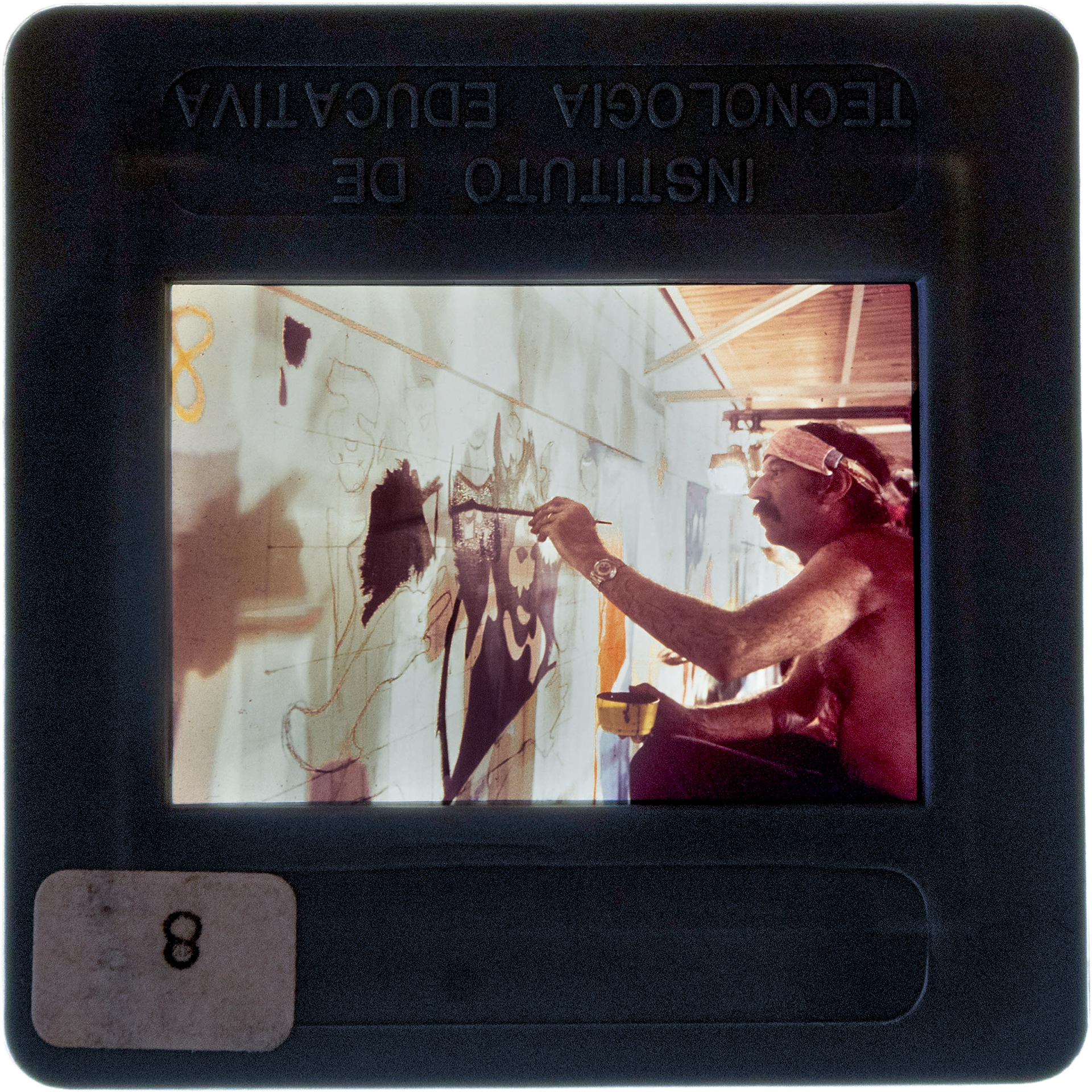 |
Whose idea was it? The Democratic Movement of Visual Artists
Movement was the word of the moment in 1974. As was democracy. The Democratic Movement of Visual Artists was the response of a group of artists and members of the Sociedade Nacional de Belas Artes (or SNBA, National Society for Fine Arts) to the Revolution. The Society was already a place of political opposition before the 25 April revolution, and it became a central space for informal meetings and artistic exhibitions in the 1970s. It still occupies the same site today, in a beautiful and well-preserved building facing the Cinemateca, on a street running perpendicular to the central Avenida da Liberdade in Lisbon. Several of the artists who were active in the 1970s are still members today. However, it is no longer a place of artistic pilgrimage and unfortunately, due to a lack of private or public funding, it depends entirely on membership fees and therefore does not have the means to open its library and archive to the public. This would be essential for a better understanding of the cultural history of Portugal in the second half of the twentieth century. Given this restriction, I have drawn on the work of those who have published specifically on art and politics in Portugal in the immediate aftermath of the 25 April revolution – Gonçalo Couceiro, Maria Isabel Roque, Margarida Rendeiro, and, especially, Isabel Nogueira, and Isabel Sabino in her book, Grupo Acre Fez. 1974-77. Arte e Dinámicas Coletivas em Portugal. Conversations with some of the artists who participated in the 1974 mural, such as David Evans and Emilia Nadal, have also provided precious material for this article.
The idea of doing a collective painting on 10 June came from the Movement, and it was one of many ideas discussed in the numerous meetings that were held at the Galeria 111 and at the headquarters of the SNBA. To be an artist was to act, intervene, share, go out into the streets, participate, and do all this collectively. Just a few days after the 25 April, they were already thinking of ways that they could take part actively in this historical moment, and on many fronts. In May, they released a statement defining their proposals for a new cultural policy: the abolition of the Office of the Secretary of State for Information and Tourism (Secretaria de Estado da Informação e Turismo), which was housed nearby in the Palácio Foz in Restauradores, in downtown Lisbon; the dismissal of all those responsible for that Office; a survey of all of the property and heritage that was under its jurisdiction; the abolition of the committees for censorship and decision-making about cultural and artistic initiatives; the establishment of a National Gallery of Modern Art in the Palácio Foz; and the transformation of the Revista Panorama, the official periodical of that same Office.
In addition to this role in shaping new public cultural policies through written interventions, the Movement also started immediately to devise politicised and artistic actions with a symbolic impact. I went to meet David Evans at the Praça das Flores. He contributed to the mural in 1974. He also participated in the one of 2022, for which he decided to reproduce what he did 48 years ago because he considered it still to be relevant. However, before David was willing to talk to me about the 10 June, he told me about a performance in which he had participated a few days before it – the wrapping up of the statues of the dictator, Salazar, and his propaganda chief, António Ferro.
Palácio Foz, 28 May 1974: “Fascist art is bad for the eyes”
The slogan "A arte fascista faz mal à vista" (Fascist art is bad for the eyes) seems to have been coined by Marcelino Vespeira, a painter, graphic artist, and key figure of surrealism. It is one of many slogans, some rhyming, others not, that could be heard and were repeated at the slightest opportunity – preferably at full volume. This is what happened when the Democratic Movement of Visual Artists – “more than 100 artists”, according to the records of the SNI, the censorship and propaganda agency of the dictatorship – took advantage of the symbolic date of 28 May (the date of the right-wing revolution that installed the dictatorship in 1926) to march down the Avenida da Liberdade to the Palácio Foz, the seat of the Secretary of State for Information and Tourism, and perform an artistic protest.
The site was emblematic because Portuguese cultural policy had emanated from it for decades. It was also the location of the two statues of the figures who had been selected as the targets of the performance – Salazar and António Ferro. David told me how, in earlier discussions, it had become clear that they did not wish to destroy the statues but rather to cover them with a black cloth, the colour of the death of the regime. The documents of History had to remain what they were – proof of a past that no longer existed but which should not be forgotten. The popular illustrated magazine, Flama, covered the event with a photo-report and reproduced the statement signed by the artists:
“Fascist art is bad for the eyes”
A Dinner Jacket – this was how Salazar referred to art (see the book by António Ferro, “Salazar”, 1933). And in the garden of the Palácio Foz – “the barracks of the full-colour demagogy”, as it was nicknamed by the artists for many years, the statue of Salazar continues a past that we would like to see removed.
The Democratic Movement of Visual Artists is not in favour of the destruction of works of art; even when they are condemnable symbols they should be retained as historical documents of a politics that must not be silenced in order that it is never forgotten or repeated.
The statue of Salazar by the sculptor Francisco Franco, while it is a symbol of a nefarious dictatorship, cannot under any circumstances remain present in a public building that is now responsible for the democratisation of the Country.
Today, on the 28 May – the forty-eighth anniversary of the birth of fascism – the central committee of the DMVA has decided to hide the statue, covering it with a black cloth and tying it up with ropes.
The “master” of the policy of being “proudly alone” will be protected from the free gaze of the Portuguese who overtly wish to be in the company of others.
At one and the same time, it is a symbolic destruction and an act of artistic production, in a gesture of revolutionary freedom.
Fascist art is bad for the eyes!
The statement ends with the signatures of the members of the Central Committee of the Movement, including several names that would also be on the mural of 10 June, and with three women among them – Alice Jorge, Ana Vieira, and Helena Almeida. Another female artist, Salette Tavares, is credited with the authorship of slogans for the day: "Contra a agressividade, criatividade" (Against aggressiveness, creativity) and “A qualidade estética é progressista: a mediocridade é reacionária" (Aesthetic quality is progressive, mediocrity is reactionary).
Even without David Evans’s confirmation it is obvious that they enjoyed themselves in great style. In a photograph taken after the performance was completed, they are pictured grinning widely at the side of the covered statue that has been wrapped in ropes and dressed in a sash that makes it entirely clear who the artists were: the Democratic Movement of Visual Artists – David Evans, Júlio Pereira, Júlio Pomar, Rogério Ribeiro, Nuno San-Payo, and Vitor Palla. This was the spirit of the time, said David. Creativity, humour, symbolic gestures, and non-violence. And solidarity with the community. As David also told me, the next day, 29 May 1974, they received an unexpected message. The railway workers were holding a plenary meeting in Entroncamento, a village an hour and a half north of Lisbon, and they had written to praise the initiative by the Movement and offer their support in removing the statues by train to an agreed location. I do not know any more.
 |
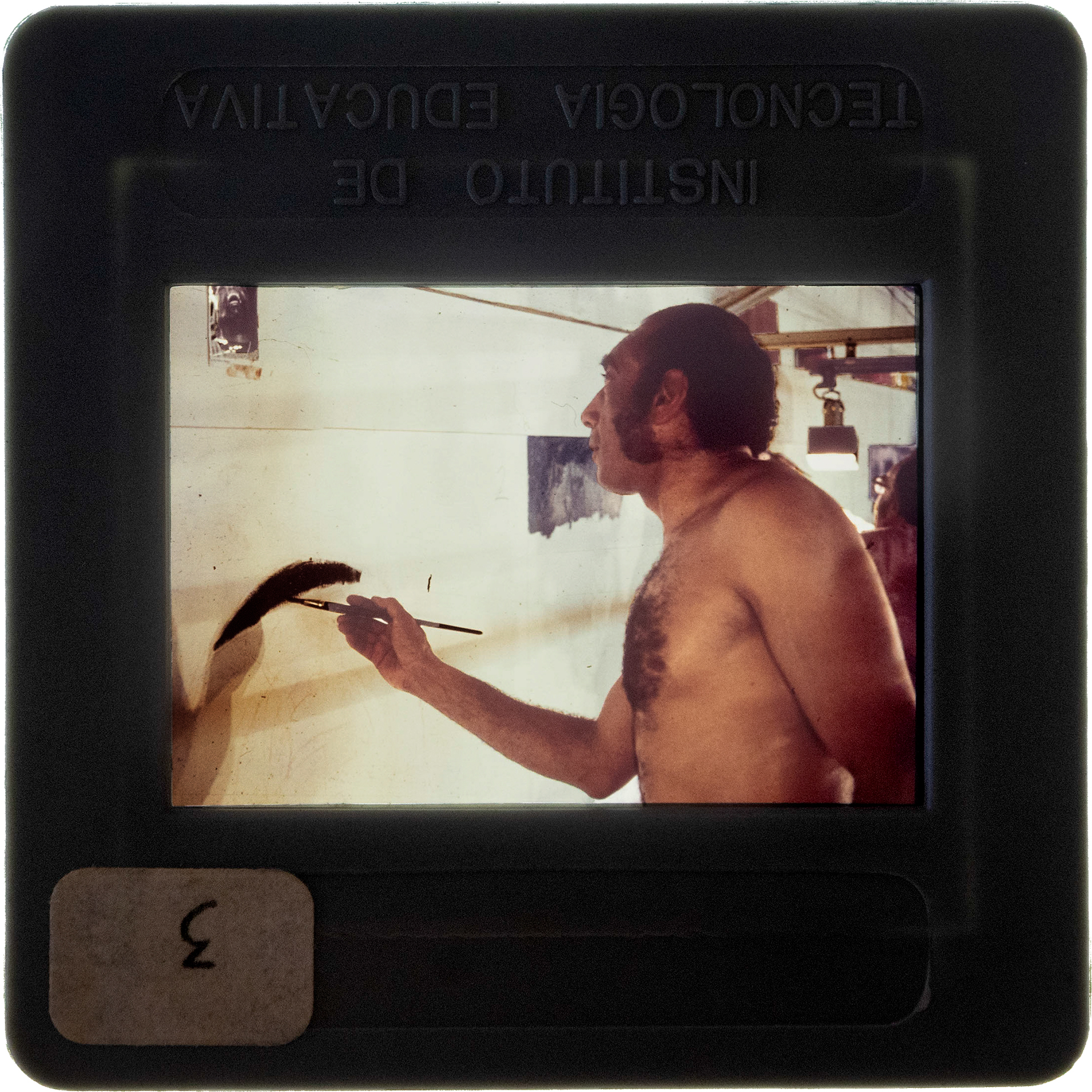 |
Oporto, 10 June 1974: The Burial of the Soares dos Reis Museum
In the north, a similar artistic protest also used humour and metaphors of death to stage a before and after. The initiative came from a group of artists and intellectuals who called themselves "Comissão de Cultura Dinâmica" (Committee for Dynamic Culture), and it was entitled “Funeral com alegria" (Funeral with joy). They saw the Museu Nacional Soares dos Reis, the principal museum of painting and sculpture in Oporto, as a symbol of the cultural poverty and passivity of the past – they accused it of merely hosting touring exhibitions and doing nothing centred on the city of Oporto and its artists. According to them, there were no postcards, catalogues or slides, captions or lists of the paintings displayed. The museum was dead. All that remained was to bury it.
The group commenced their march at the Cooperativa Árvore art school and went to the door of the Museum, where they proceeded to deliver parodies of an auto-da-fé inspired by the Inquisition and funeral eulogies. The photographs – taken by the architect Manuel Magalhães and reproduced in the book Arte e Revolução. 1974-1979, by Gonçalo Couceiro – show a group of people with posters, some of whom are dressed up in capes and black hats. It is possible to read on one of the posters: “Down with that dictatorship, which was never chosen by us and did whatever it wanted until now – be gone, be gone I said!”. On another: “The Necrophiliac Cycle of Oporto fulfils its salutary duty of burying the Soares dos Reis Museum”. According to Isabel Sabino, this happening influenced the creation of the Modern Art Centre (Centro de Arte Moderna) in the Soares dos Reis building soon afterwards, which Fernando Pernes was appointed to direct. This would be the first step towards what, in the 1980s, would lead to the establishment of the Casa de Serralves as an artistic space.
In these first months, artistic initiatives still took place mainly in the two principal cities of Portugal, where the majority of artists who had not left for London, Paris, or Munich were based. However, in the summer of 1974, there emerged some collective projects outside the big cities. These were the result of a partnership between the Armed Forces Movement and the Democratic Movement of Visual Artists, and they formed part of the Fifth Division’s Campaigns for Cultural Promotion and Civic Action. These campaigns were spread all over the country and sought to improve the quality of life for local populations. There were multiple fronts, and art was just one among many initiatives. David Evans remembers one episode in particular: first, the soldiers from the Armed Forces Movement installed electricity in a village, and later, the artists appeared to celebrate the arrival of electric lighting with a collective painting depicting figurative references and words painted on one of the walls of the village.
The museum was dead. All that remained was to bury it.
Belém, 10 June 1974: The Party
The first National Day of Democratic Portugal served as the leitmotif for what had to be a “party”. The word was invoked countless times. The party that had commenced months earlier had to be continued. As well as the collective painting – the main event of the day – there was a whole programme of activities: a memorial to José Dias Coelho, a sculptor and Portuguese Communist Party (PCP) activist who, in 1961, had been assassinated by the political police, the PIDE. His daughter, the painter Teresa Dias Coelho, used her rectangle on the 1974 mural to write her father’s name as an homage. Fernando Lopes Graça’s choir sang resistance songs. There was a performance by the Comuna-Research Theatre Company (Comuna-Teatro de Pesquisa) of a play entitled Cegada (Blinded). What nobody knew yet was that this caustically humorous parody of the previous regime would provoke the principal moment of disruption that night – when the live coverage by RTP was unexpectedly halted and recent memories of censorship interrupted the party.
In 1974, the canvas was inside a large building with high walls, an open space that did justice to the various identities that the space had already assumed. It had initially been built in 1940 as a pavilion for the Exposição do Mundo Português (Exhibition of the Portuguese World ), after which it became the Primavera or Belém Market and, in 1974, the Modern Art Gallery. From three o’clock that afternoon, the artists took their places on the scaffolding that had already been installed at three heights, and they started to paint. Although it was inspired by the mural paintings that had also started to fill the street walls of Lisbon and other Portuguese cities over the preceding months, this was really a canvas of huge proportions and not an actual wall. Other artists created sculpture installations, which were placed in the Gallery space – Clara Menéres put up a few canvasses on a structure as though they were sails on a boat, and on which could be read: “The act of creating / is an act of love / is a free act”, “Art is not a stock exchange / down with the artists who are prostituted to capitalism / down with the art of the elites / down with recreational art”, and “down with those who promote themselves in the guise of a pseudo-democracy”. On another canvas, we are able to read “Homage to the victims” but it is not possible to read more on the photograph that is all that remains of the installation that no longer exists.
José Aurélio sculpted a map of Portugal from wood, on which, inspired by the letters of the word “FRÁGIL” (fragile) stamped on wooden crates, he wrote an allegory of the contemporary political moment: For: everyone to build / Sender: Armed Forces Movement / Contents: A New Portugal. 25 April 1974”. However, as is shown in one of the photographs of the time, someone wrote over it, without the consent of the artist – “Who is going to build it?” Ultimately, the ironic anonymous intervention was asking, rhetorically, who was going to build that new Portugal? As Eugénio Melo e Castro wrote in 1977, Portugal was transformed during those years into a “huge visual poem”. Maria Helena Vieira da Silva used the idea in one of the most beautiful posters of the period – “Poetry has occupied the streets”. A poem, but a poem in which the words that had been written by some were crossed out so that others could be written on top.
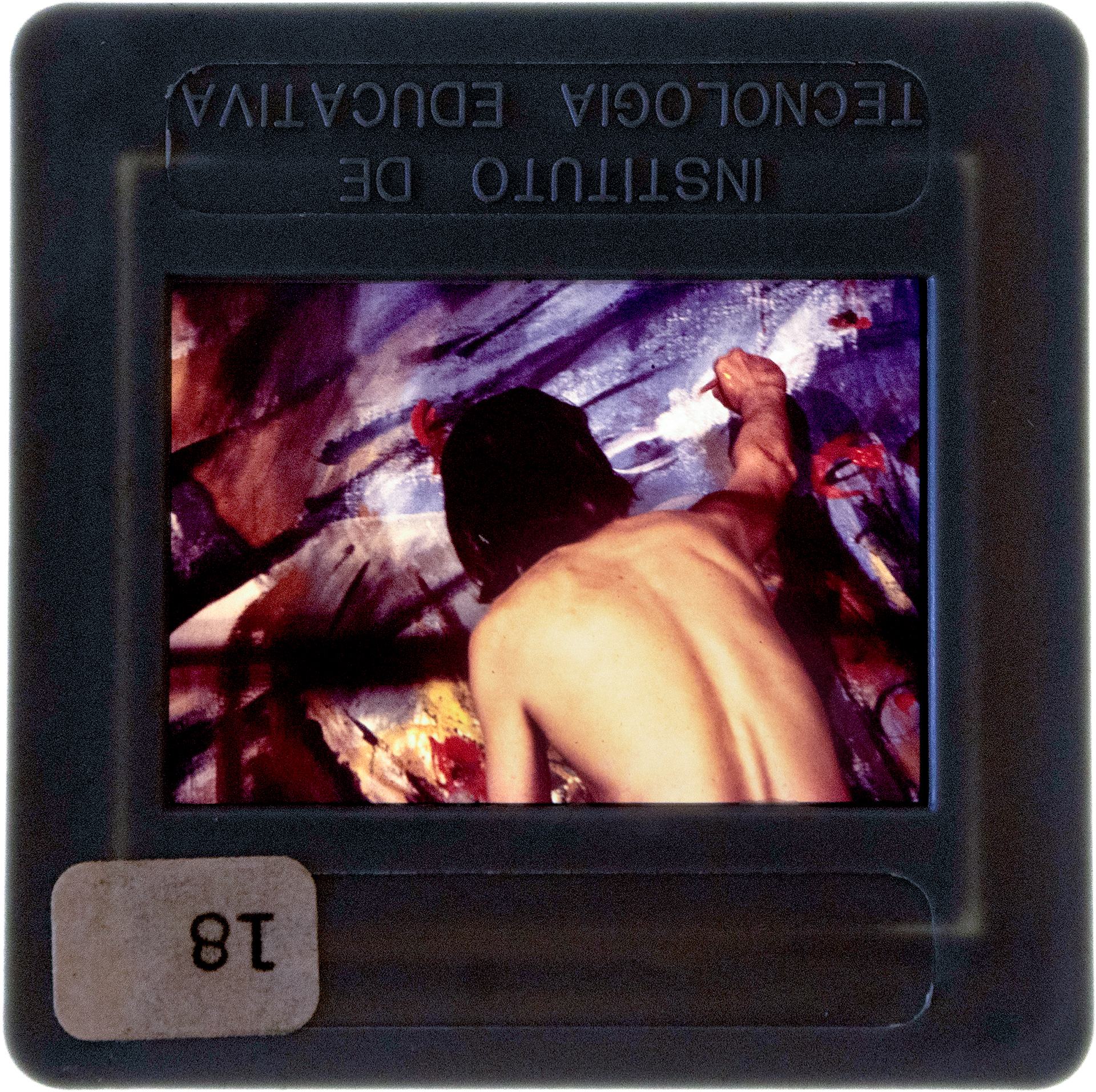 |
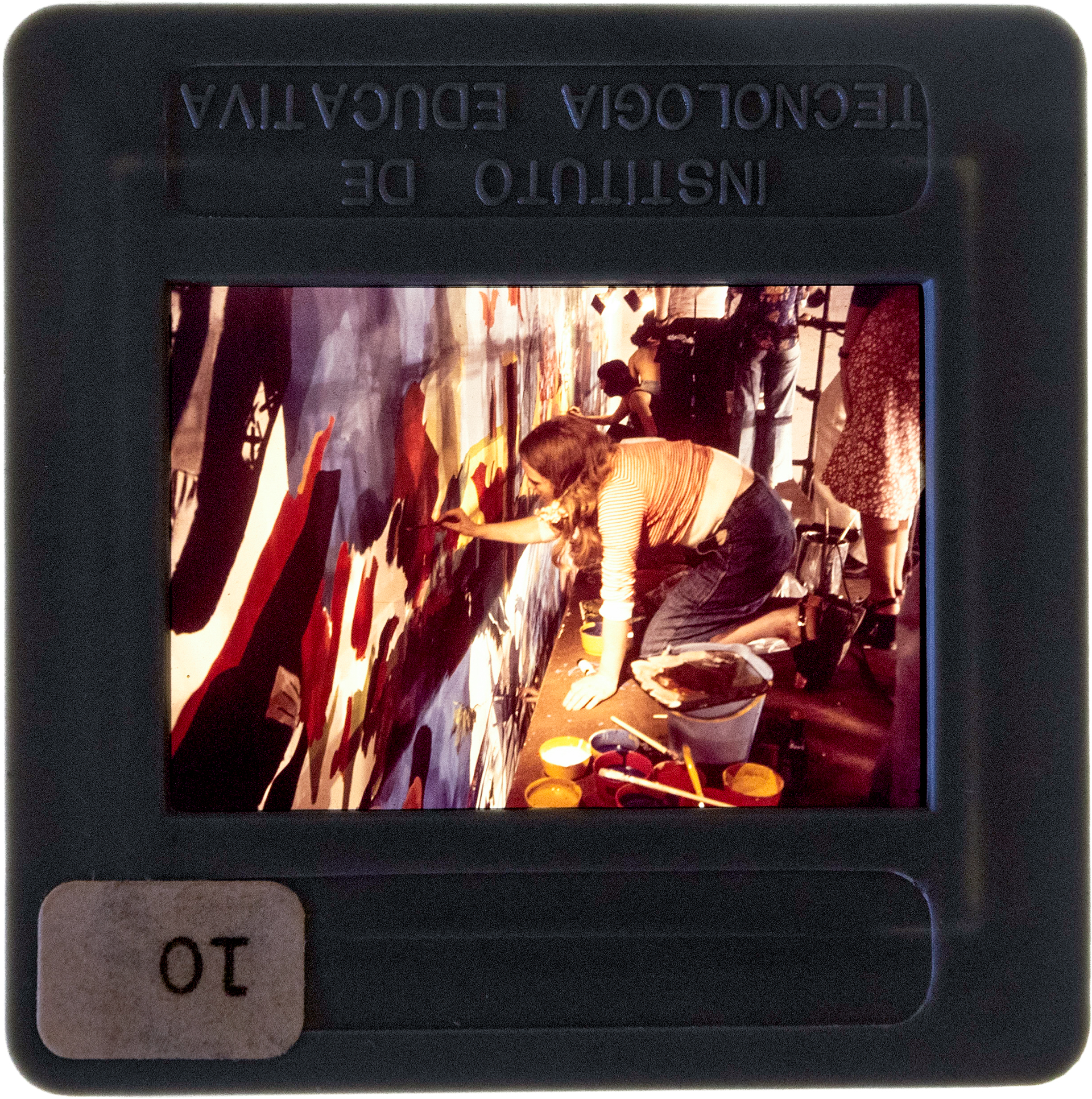 |
The Collective Painting: Images, Words, and Oral Histories
Words were consistently present – shouted, sung, spoken, written on paper, of course, but also on walls, posters, canvasses, or sculptures. On its own or over images – it was necessary to add colour to a “grey” Portugal, but also to write down that which had previously been censored.
According to David Evans, it had been agreed in advance by the organisers of the 1974 Mural that they would not write any party-political acronyms. Despite this, the sculptor João Cutileiro, who was there but was not one of the 48 artists, had written “MRPP” (Movimento Reorganizativo do Partido do Proletariado, Reorganizational Movement of the Party of the Proletariat) on one of the rectangles allocated to another artist. I looked it up in the reproduction of the mural that was published in the journal Colóquio Artes and there it is – the letters “MRPP” somehow disguised, because someone had put two additional round parts on the “P”s to turn them into a “BB”. What this also meant was that in the same section of the mural there were three different layers of meaning, produced by three different hands, functioning somehow as a metaphor for the many different political sympathies that emerged after the April Revolution.
There do not seem to have been any other party acronyms written on the canvas, although the murals contained numerous other words and phrases that are indissociable from the political moment. In addition to the name of “José Dias Coelho” that has already been mentioned and was written by his daughter, it is possible to read on the section by Tomás Mateus, “os tanques vestiram-se de povo” (the tanks wore civvies). “O Povo unido jamais será vencido” (The People united will never be defeated) is on both the painting by the woman painter, Menez, and on that of Manuel Baptista. Costa Pinheiro wrote “a nossa imaginação é vossa” (our imagination is yours) and “a imaginação é a nossa liberdade” (imagination is our freedom). The artist Vespeira does not paint figuratively but leaves the text “Open revolution freed art” (Revolução aberta arte liberta). In the space above, allocated to Fátima Vaz, we can read “25 Abril”, the date of the democratic revolution. Nikias Skapinakis painted a naked woman carrying a banner that says “Liber”, the Latin word for freedom. Vitor Fortes writes a more enigmatic “projecto para miragem” (project for a mirage). Meanwhile, on his side, Jorge Vieira adds a carnation, the flower that became a symbol of the Revolution, to two hands, and a “Viva o 25 de Abril” (Long live the 25 April). Querubim Lapa writes in smaller letters – “Sou a Liberdade que renasceu das cinzas” (I am the Freedom that was reborn from the ashes). Júlio Pomar amplifies several words until they become almost unreadable, but it is possible to make out “Abril”.
In June 1974, the end of colonialism had not yet been achieved – this would only take place a year later, in 1975 – and several of the artists drew on the subject. Like Manuel Baptista, David Evans used the pop language of cartoons and wrote “Vai um tirinho???” (Who’s for a shot???). Ultimately, Portugal was still a colonising country and the wars against African Liberation movements continued. Next to Evans, Alice Jorge wrote the oft-repeated slogan of “Fim da Guerra Colonial” (End the Colonial War) beside two figures – a pregnant, white woman in the foreground, and a black man at her side, protecting her with his hand on her shoulder. Sá Nogueira and Emília Nadal left the most powerful evocation of the armed conflict – the former depicts the face of a black woman screaming; the latter, the shadow of a soldier exploding in the air. On the 10 June 2022, Emília Nadal recovered the memory of that image and evoked the soldier that she had painted 48 years ago.
David Evans tells me another story. The painting in Jorge Martins’s space was not done by the artist, but by two girls who were there, somebody’s daughters. Both Emília and David describe the “insufferable heat” on the day, which was only intensified by the hundred (thousands?) of people walking around. This matches up with what I had already observed in the photographs, slides, and films – lots of bare-chested men, whether painting or moving around the gallery, lots of papers transformed into improvised fans, and lots of sweat glistening on the black and white bodies of the national TV coverage by RTP (Radio Televisão Portuguesa, the public television and radio network).
Emília Nadal tells me how, as well as the 48 artists, numerous friends and acquaintances were also on the iron structure to help out in the making of the mural. They fetched water, washed brushes, took photographs, chatted, offered company. Alongside Emília was Maria Gabriel, a painter who had also made a name in both the teaching and practice of etching, and Kukas, a jewellery designer and ceramicist. David was accompanied and helped by his wife, the artist Helena Lapas, who was pregnant at the time. The photographs, films, and the RTP coverage all show how joy, and a relaxed atmosphere went hand in hand with the chaos of the day, the continual movement of people, and an apparent absence of organisation that did not seem to bother anyone.
Photographs, Slides, and Films: from the Institute for Educational Technology to the Amateurs
When I see images of crowds in the Portugal of the 1970s, I notice the number of people, especially men, with cameras in their hands or hanging around their necks. I know nothing about the consumption of photographic material in Portugal after 1974, but it must have increased massively. Today, the collective painting no longer exists, only representations of it do, in films and photographs, both in colour and in black and white, and in slides made from the stills of a colour film. There was also a project to send the canvas to the Venice Biennale as the Portuguese representation of that year, and to the Salon de la Jeune Peinture in Paris, but in fact it never left the Gallery and, when the building burnt down, the work went with it. What remains today, therefore, are the images of the collective canvas that burnt in the 1981 fire.
We might divide these images into two categories: spontaneous images made by the artists, their friends, and the general public who were present and took photographs or filmed during the event; and professional ones. Some of the “amateur” images were made public. Others remain in the houses of the people who took them, and perhaps one day they will come to light. Sena da Silva, Rui Mário Gonçalves (who has also written about the mural), and José Nascimento are just some of the names associated with the photographs. Manuel Pires, one of the 48 artists, also took some film footage.
The films that we know about were made by professionals: one of them was produced by the Institute for Educational Technology and others by RTP, which did a long live transmission of the event. Manuel Costa e Silva was employed as director of photography at the Institute for Educational Technology, and he dedicated himself to filmmaking. He was in Belém on the day and made a short colour film that is also a work of art and is now available online. The slides that I have at home, produced by the same Institute, are stills, images of that film, although Manuel Costa e Silva’s name does not appear on them.
What was the Institute for Educational Technology (ITE)? It had been established at the beginning of the 1970s and adapted to the political changes of 1974. It was the successor of the IMAVE, the Instituto de Meios Audiovisuais e Educação (Institute for Audio-visual Media and Education), created in 1964 to promote the Telescola, a project offering education through television. The IMAVE was a project run by the Ministry of Education in order to reduce the extremely high levels of illiteracy in the country and to enable access to education for those who lived in remote areas. The priorities were distance learning, the training of teachers and young people, and above all, the dissemination of modern technologies throughout the whole country – television, radio, films, and slides.
When the Institute was closed, the vast audio-visual collection that had been produced during that period was passed to the Universidade Aberta (Open University) in Lisbon, as the institution that continued the mission to promote distance learning. The collection is open for consultation and much of the audio-visual material is already available in open access. The “educational” themes produced by the ITE in the 1970s could not be more varied, but there is another project that is clearly related to the film and slide catalogue based on the “Collective Painting by 48 artists”. It is called The walls have spoken: mural paintings and graphics, “a collection of 90 photographs published in 3 sets of slides” (Os muros falaram: pinturas murais e grafismos, coleção de 90 fotografias editada em 3 carteiras de diapositivos), and is dated 1975.
The End of the Party: When RTP Censored the Play by Comuna
The collective painting was done “in front of everyone”. Not only those who went to Belém, but also those who wanted to watch it live on RTP, the only television channel at that time. The “people” were also, and increasingly, “viewers”. Nowadays the live film is available to watch in the rich, historical, online archives of RTP. There are hours of footage, but they are worth watching. It made me laugh, cry, and smile – that mixture of condescendence with which we view images of the past, already knowing what the future held. However, I do not share the clever cynicism of Ernesto de Sousa – a central figure in the arts during the second half of the twentieth century – in relation to what happened on 10 June 1974, and which he wrote about in the journal, Colóquio Artes. He saw it as “bonecos para o povo” (entertainment for the masses) before a populace that had nothing to say for itself. I saw a contagious joy, even if innocent and utopian.
But let us watch the film. The live coverage starts. Already it is hard to make out the artists and the painting in the midst of the “Party” at which it was hoped that “the people” would encounter “art”. The first seconds of the images that are available – even before the words “Live from the Modern Art Gallery, RTP presents” appear on screen – seem to be an allegory of this. We see a man with a camera slung over his shoulder, close to the sound and film equipment, unaware that he is being filmed. To the side, almost off screen and seated in a chair, an old woman dressed in black and with a black scarf over her head – just like the hundreds of women in black who were painted, sketched, and photographed by the neorealists and others during the long New State dictatorship. She represents the past and present of Portugal side by side on that national day.
Here and there, we see RTP staff. It cannot have been easy to work that day, as the sound and images reveal. “Good evening, viewers. We are here at this marvellous show”. “Now, television is for all of us”, says the presenter, Luís Filipe, as he tries to interview a rather uncollaborative child. “Do you want to be on television?”. “No”, says the little boy. People of all ages, old and young, their different social backgrounds visible in their clothes and in their bodies. There are some military uniforms here and there. Many cigarettes.
In the background, we see the scaffolding where the painting seems to be nearly complete already. Some artists are still holding brushes, finishing off, but cramming the iron structure there is already more of the audience than artists themselves. Up on the scaffolding there was surely a better panoramic view of the party. There is a stage with empty chairs and microphones. Urbano Tavares Rodrigues, the writer and journalist, is the first to be interviewed. “The colonial war has to end!”, he says for the camera. The choir of the Amateur Music Academy (Academia de Amadores de Música), directed by Fernando Lopes Graça, is ready to begin, but before this, the RTP presenter starts an impromptu rendition of Grândola Vila Morena, the song that is intrinsically associated with the revolution, which quickly spreads across the human mass that sings it together. Finally, the choir begins. But only after we have heard shouts of “less noise”. “Voices raised, united like the fingers on a hand, we must come to the end of the road, by the sound of this song.” The poem is by José Gomes Ferreira. The music is by the conductor. The heat increases. Everything to hand is put to use as a fan.
The other two films would merit a doctoral research project. A performance or play by the Comuna theatre company had been announced on the programme for the day, but as David Evans tells me, nobody knew what it was about. It was called Cegada (Blinded) – and was staged by João Mota, who also acted in it, alongside Manuela de Freitas, Carlos Paulo, Madalena Pestana, Melim Teixeira, and Francisco Pestana. In the footage, João Mota appears dressed as Hitler, in short trousers and sporting a little moustache, a cap with “PIDE” on it, the name of the Portuguese political police and, on his coat, “Gestapo”, while he shouts in made-up German. In his arms he carries a small coffin that says “Salazar”. The chaos in the room is evident – the other actors open pathways through the mass of people in order to reach the stage. The choir continues to sing – “the men who go to war, go to war, will die”.
The bishop stands up. His enormous cardboard mitre falls to the floor and the public laughs. The cherries dangling from his bishop’s hat leave no room for doubt – it is Cardinal Cerejeira [his surname also means “cherry tree”], the face of the Church during the dictatorial regime. At his side, a big boy, played by Manuela de Freitas, wearing a lifebuoy over his arm and a white hat that says “Tomazinho”. She evokes the former president, Américo Tomás. A woman in drag plays Marcelo Caetano, the last prime minister before 25 April. Several other names of people who had been in power until the day of the revolution are evoked: Moreira Batista, the home secretary, and Silva Pais, the director of the PIDE.
People of all ages, old and young, their different social backgrounds visible in their clothes and in their bodies. There are some military uniforms here and there. Many cigarettes.
It was a parody of wordplay that was intelligible to all. Faces pass in front of the cameras. The noise is deafening. The RTP technicians talk amongst themselves. The actors leave the stage and mix with the crowds. Suddenly, a serious announcement from the presenter with the microphone – “the scaffolding had been erected for the 48 painters, and not for the hundreds who were on it”. Vespeira, one of the artists, reiterates the request: “A horrible tragedy could happen which would ruin our party. I ask you please to come down so that there are no unfortunate accidents. The scaffolding might not be strong enough”. It could have been disastrous. But it wasn’t. The RTP cameras go outside the Gallery, where the Comuna actors are continuing their happening at the small lake where there is a boat. João Mota in his fascist garb carries on with a whistle in his mouth. The bishop plants kisses on the foreheads of children and blesses the crowds. There are several minutes of not much happening and the cameras seem unsure of what to focus on. But nobody seems to be worried. A neon sign appears saying, “Food and Drink”. No actors can be seen on the screen. Finally, they reappear. Madalena Pestana is already on stage as Marcelo Caetano. She is dressed in a man’s suit, bowler hat, and thick glasses, and she delivers her speech to the raucous applause of her audience. “We will become worthy of this country from the Minho region to Timor, such a big country, so big, so big, that it does not fit in anybody’s head”. The implicit references were familiar to everyone present – “from the Minho to Timor”, meaning from the northernmost region in continental Portugal to the most remote of its colonies, East Timor, was a phrase used in the propaganda of the New State to reinforce the imperial greatness of Portugal. A “small country” that was, in fact, “big”.
The final RTP video: João Mota announces the speech by “Américo Tomaz”, who is still “very tired from his last voyage of discovery”. Again, this is a parody of the dominant historical narratives of the Portuguese “discoveries” of the world. Manuela de Freitas starts to speak into the microphone. “As a sailor, I cannot fail to stress, here, that it was by water that our ancestors spread across the seven seas, and that we continue to expand ourselves and to make a mess of the four corners of the world with the five shields and the three Marias.” Laughter. It was an allusion to Maria Isabel Barreno, Maria Teresa Horta, and Maria Velho da Costa, the authors of the censored New Portuguese Letters (Novas Cartas Portuguesas), published in 1972 as a strong critique of the patriarchal and authoritarian culture of Portugal. The prosecution of the authors was only halted after the 25 April. The performance continued to play on words – a country under censorship for so many decades knew all too well how dangerous words could be, and also how they could have multiple meanings. “We have nothing to envy in foreigners. Like them, we have ‘marchism’,1 the doctrine of popular parades,” Américo Tomáz continues. “We have workers movements” – the Portuguese “movimentos operários” recalls the word “opera” – “which is when the opera from the Coliseu theatre goes to the São Carlos opera house, and the one from the São Carlos goes to the Coliseu. Where they sing Aida2 but they don’t sing the return.” The Beggar’s Opera. “Let us, then, build the future with our eyes on the past and if the past is not well done put it in the oven for another five minutes to cook through.”
Américo Tomáz / Manuela de Freitas moves from speech to awards. The satire continues. They call to the stage a “Robbialac” – the name of a Portuguese brand of decorating (rather than artistic) paint that they jokingly use to refer to the painters – along with a musician, a member of the choir, and an actor. Vespeira goes up on stage and they tie his hands with a thick rope, the “decoration”. Suddenly, the party stops. Confused shouts can be heard over the crowd. “Fascists!”, the “television interrupted the broadcast!”, “fascists!”. For far too long, it is not possible to tell what is happening. The actors clearly do not seem to understand what is going on and they continue to call representatives of culture up to the stage to be decorated with “official medals”. Finally, the crowd shouts in unison – “explanation, explanation, explanation!”. Somebody grabs the microphone: “it is absolutely necessary that the television gives viewers an explanation”. “Why has the television interrupted the programme that we were watching here and put the following announcement up – ‘the Programme has been interrupted and we will return in a few moments’? We already know what that announcement means’, shouts the man with the microphone. Applause follows.
It is not long before the word censorship appears. “So, did censorship end or didn’t it?!” somebody asks.
It is not long before the word censorship appears. “So, did censorship end or didn’t it?!” somebody asks. An anonymous man – a self-styled “man of the Portuguese people” – yells into the microphone, “those scumbags Caetano, Tomaz, and Cerejeira, why did these tough guys not cut off Caetano, Tomaz, and Cerejeira when they were, quite frankly, denigrating the name of the Portuguese people, insulting the Portuguese nation, disgracing the virtues that these people still maintain?” We just see black and white heads wandering about, the words become unintelligible. Everybody seems to be waiting for something, it is not clear what. The actors start to take off their costumes and the hats of their characters. One of them ends up in his underwear. They wrap all of the props up in a canvas and carry it on their backs. A huge poster has on it, “we need to bring back memory”. They are all sweating. And the shouts of “explanation, explanation” continue, interspersed with “fascists”.
RTP continued to film, however. Even if, in the studio, they had decided to cut. That is to say, today, in the RTP archives, we are able to view what the television viewers of 10 June 1974 were stopped from seeing. It is a rare occasion on which we see an immediate reaction to a gesture of censorship, filmed by the same entity that practised it. “TV is fascist”, shouts one voice. The confusion is interrupted by an appeal for the parents of “Augusto Jorge”, a lost child. They start to call for an immediate reaction. “Let’s all go to the television studios!”. “In Lumiar, it is still the 24th of April!”.
Finally, we hear a voice speaking on behalf of the Movement of Visual Artists. “We are against censorship. We did not cut the transmission. We are partying with the people. We are going to write in protest.” “There is a lesson to be taken from tonight. Fascism has not ended, censorship has not ended, the revolution has not finished.” The emotion is audible in the voice that is yelling. Here and there, the shouts recommence: “fascists”. “Attention, attention comrades”, is heard several times. “Everyone to the streets to protest the measure that was taken.” Suddenly, a voice is heard that knows something more. It had been the “representative of the Junta for National Salvation [Junta de Salvação Nacional] who had taken the decision, which had been confirmed subsequently by the Minister of Communications, Raul Rego – therefore, there is only one response, let us go to the TV company immediately”. “To the Palace in Belém”, shout others, invoking the official address of the President of Portugal. David Evans tells me how, that night, there were several cars that left, full of people, not for the presidential palace in Belém, nor for the TV studios in Lumiar – but for the Palácio Foz in Restauradores, the state entity that decided everything related to culture and communication. In the days afterwards, discussion of the topic continued in conversation and in the newspapers.
In fact, the decision seems to have been taken by Mariz Fernandes, a member of the Junta for National Salvation, which took power after the 25 April 1974. It had been ratified by the minister Raul Rego and by the Junta as a whole. The RTP workers rejected the decision. Other social groups also repudiated the satirical performance against the former political regime. Some were monarchists and Catholics such as the Christian Democrat Party (Partido Democrata Cristão). The episode remains to be investigated, but in one of the 48 rectangles of the collective painting, the one by Júlio Pomar, a visible mark was left that can be read in the photographs: “Censorship exists”.
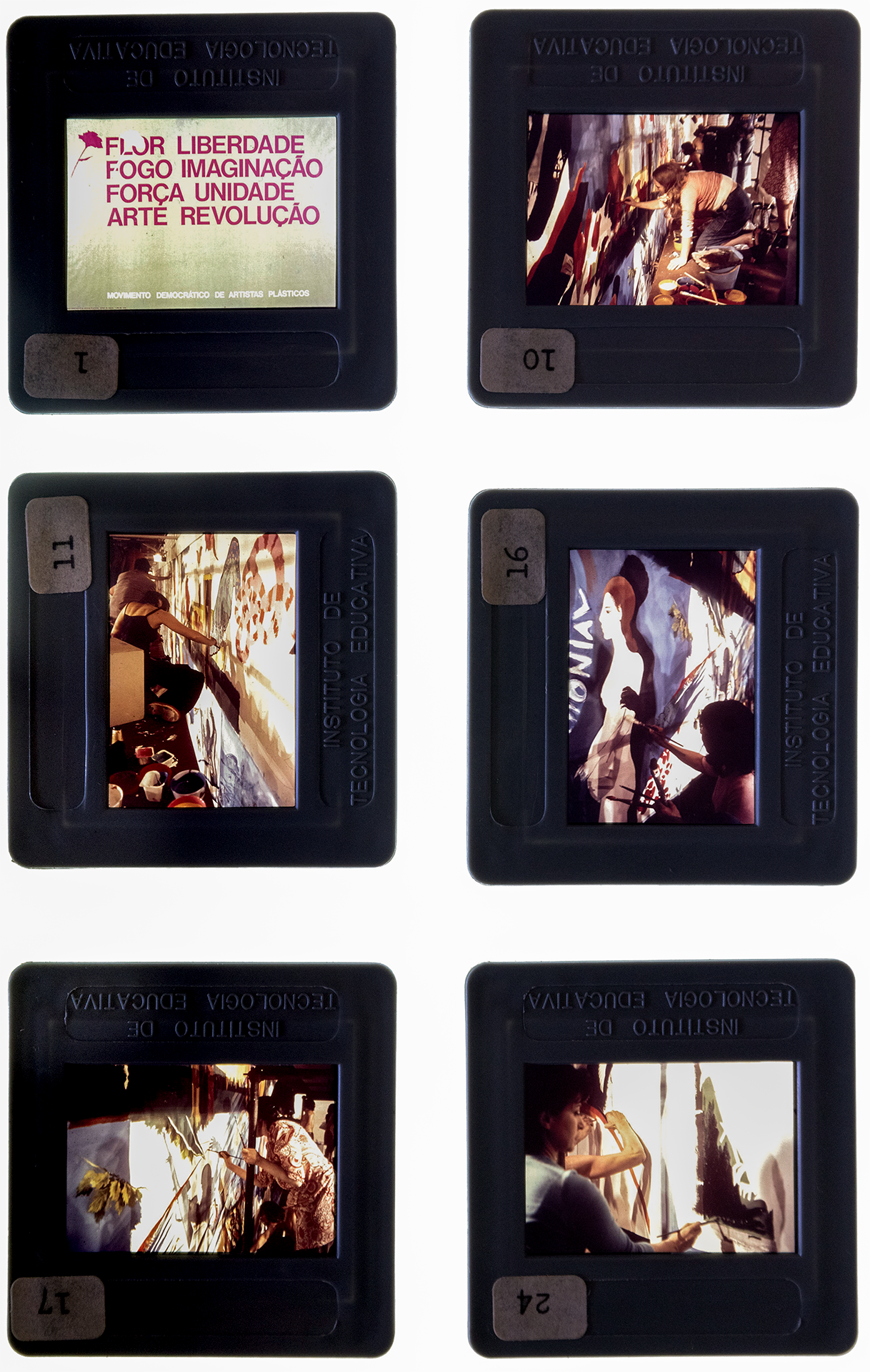
maat, Belém, 10 June 2022 – Mural entitled 48 artists, 48 years of freedom
On the day that this article was first published in Portuguese, 10 June 2022, I spent the whole day in the gardens of maat watching the making of the mural, live. Anyone who wished could attend, watch, and wander about. In 1974, it was open to the “people” (o povo). Today, it is open to the “public”. Between 10 in the morning and 10 at night, the 48 artists who had been invited worked in the space that was allocated to them in a draw. A rectangular wall with two heights was divided into 48 rectangles, 24 on the bottom, at floor level, and another 24 on the top, which were accessed by scaffolding. Each artist used their rectangle as they saw fit. What they produced on the day will remain on show until at least 25 April 2024.
In addition to the collective painting, and just as in 1974, throughout the day there was a parallel programme that, unlike the mural, was ephemeral. There were artistic performances by Xana and Manuel João Vieira. There were also musical and performance-based shows: a breaking battle – a type of breakdance in which the participants compete to produce increasingly challenging movements with their bodies to the beat of the music; Juana na Rap, a rapper from the south side of the river Tagus whose lyrics deal with the neighbourhood where she grew up; and Xullaji, previously known as Chullage, a rapper whose lyrics are both poetic and political, and who brings together Afro and decolonising perspectives. The museum also offered free guided tours, and there were stalls selling food from various parts of the world. In 1974, the “people” were also able to participate – there was one space on the canvas for whoever wanted to make a contribution. Not so in 2022. The role of the public was more or less that of passive spectators or friends of the artists. A joyous and exhilarating atmosphere, however, was also seen and felt in 2022.
And who were these 48 who participated in the collective intervention marking “48 years of freedom” on 10 June 2022? Any selection is always a subjective gesture that includes some and excludes others, but in this case there were some criteria. In the first instance, there were the artists who participated in 1974. Some have already died. Others did not want to, or could not, participate. Eight were there: Teresa Dias Coelho, Teresa Magalhães, Emília Nadal, Guilherme Parente, Eurico Gonçalves*, José Aurélio, Lima Carvalho, and David Evans. Sérgio Pombo* was represented by Alexandre de São Marcos.
Secondly, there was a small group of artists who also formed part of the temporary exhibition, Interferences: Emerging Urban Cultures, which was on show at maat until 5 September 2022. This exhibition was curated by Alexandre Farto (Vhils), António Brito Guterres, and Carla Cardoso, and aimed to show the different expressions of urban culture that can be found in present-day Lisbon. These are artists who often grew up on the so-called periphery of the capital city, disconnected from the museums where their work is now shown; artists who use the streets and their walls as spaces to practise their art. Many of them are Afro-Portuguese and were born after the 1970s; their parents’ lives were determined by the course of the political events of 1974 and 1975. Interferences was an exhibition about the present, but it was also attentive to the genealogies of the past.
The remaining artists were the more subjective and personal choices of João Pinharanda – “those who have stood out on the Portuguese artistic scene over the last 48 years of democracy in Portugal.” The names of the 39 artists who did not participate in 1974, but who participated in the 2022 event, are thus: Diogo Carvalho, Carlos No, Ana Pérez-Quiroga, Manuel Botelho, Alice Geirinhas, Ana Aragão, Moami 31, Projeto Manicómio, Mariana Duarte Santos, Tamara Alves, Susana Gaudêncio, Manuel Botelho, Pedro Amaral (from the Borderlovers collective), Ana Vidigal, Joana Vasconcelos, Maria Imaginário, Vhils, Dwelle, ROD, Filipa Bossuet, Petra Preta, Mais Menos, Fidel Évora, António Alves, Obey SKTR, Carlos Stock, Sepher Awk, Onun Trigueiros, Rappepa, Ângela Ferreira, Manuel João Vieira, Pedro Portugal, Pedro Cabrita Reis, Mariana Gomes, Gabriel Abrantes, Fernanda Fragateiro, Francisco Vidal, and Sara&André. Kiluanji Kia Hendé had to withdraw at the last minute.
There were 9 women among the 48 artists of 1974 – 10 out of 50 artists if we count the two sculptors who also exhibited in the Gallery, Clara Menéres and José Aurélio. One fifth is a measly proportion, but, paradoxically, it is high compared with what happened in the following decades. In 1974, António Domingues was the only one of the 48 who identified as Black. He was the son of a white Portuguese mother, and his father was the intellectual and writer, Mário Domingues, who had fought for Black emancipation during the First Republic (1910-28). The equalities that were stated as part of the April 1974 revolution received, and continue to receive, contestation; two of these areas are, without doubt, gender and race. In the arts, too. However, it is clear in the mural of 2022 that there is a consciousness of the need for greater diversity in the gender and ethno-racial diversity of artists. More diversity, more collectives in which individual identity may be erased; more diversity in training, in artistic languages, and in international experiences. It is, without doubt, more representative of the Portugal of today, which is more diverse and more equal than the Portugal of 1974, even if it is much less egalitarian that one might have imagined, in1974, that the future would be.
* Has since deceased (editor’s note).
Translated by Rhian Atkin.
All photos by Daniel Rocha, of the album of slides entitled “flower freedom fire imagination strength unity art revolution” by the Democratic Movement of Visual Artists, produced by the Institute for Educational Technology, on the occasion of the "25 April – Day of National Liberation / Day of solidarity with the Armed Forces Movement”, bought by Filipa Lowndes Vicente at the Feira da Ladra flea market in Lisbon.
Filipa Lowndes Vicente, a historian, is a researcher at the Institute of Social Sciences of the University of Lisbon (ICS-ULisboa). In 2015 she was a visiting professor at King's College, University of London and, in 2016, at Brown University, Providence, USA. Her work on intellectual and cultural history in Europe and India (1850-1950) has resulted in books like Travels and Exhibitions: D. Pedro V in 19th Century Europe and Other Orientalisms: India between Florence and Bombay (1860-1900). Her work on colonial visual culture has two main publications: the 2014 book Vicente edited, with 30 authors, The Empire of Vision. Photography in the Portuguese Colonial Context (1860-1960), and her next book, edited with Afonso Dias Ramos, Photography in Portuguese Colonial Africa (1860-1975), which will be published by Palgrave in 2023. Her research on women artists and feminist art history was made public in the book Art without History. Women and artistic culture (16th-20th c.), in 2012, and also in the 2016 catalogue of the exhibition she curated Aurélia de Sousa, Woman Artist, 1866-1922.
48 artists, 48 years of freedom is the name of the artwork that will be symbolically created on 10 June 2022 in the maat Gardens, a collective mural intervention that reinterprets the work entitled Painel do Mercado do Povo [The People's Market Panel] created by the Movimento Democrático dos Artistas Plásticos [Plastic Artists for Democracy Movement] on 10 June 1974, in Belém. The reinterpretation of this mural, 24 meters long and 3 meters wide, has the participation of 48 artists: some of them participated in the creation of the original panel and the others are artists who stood out in the Portuguese art scene during the last 48 years of democracy in Portugal, an anniversary celebrated this year, and some of them are part of the exhibition Interferences: Emerging Urban Cultures (maat, 30/03–05/09/2022).


